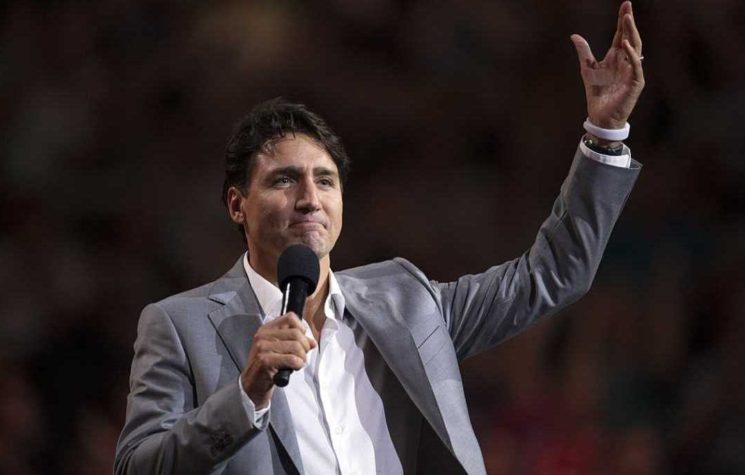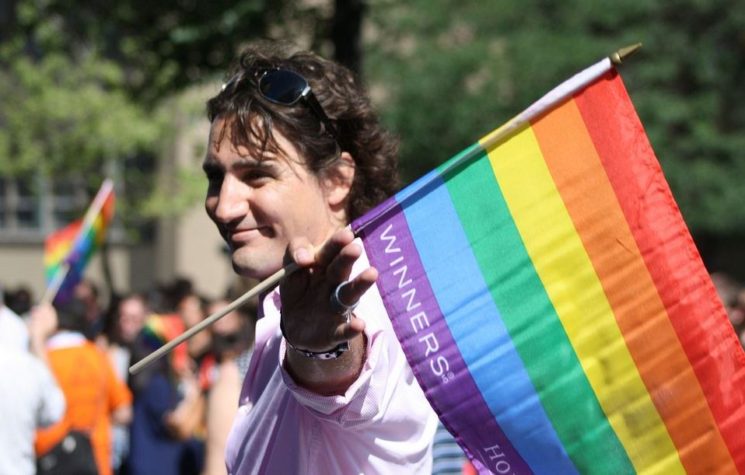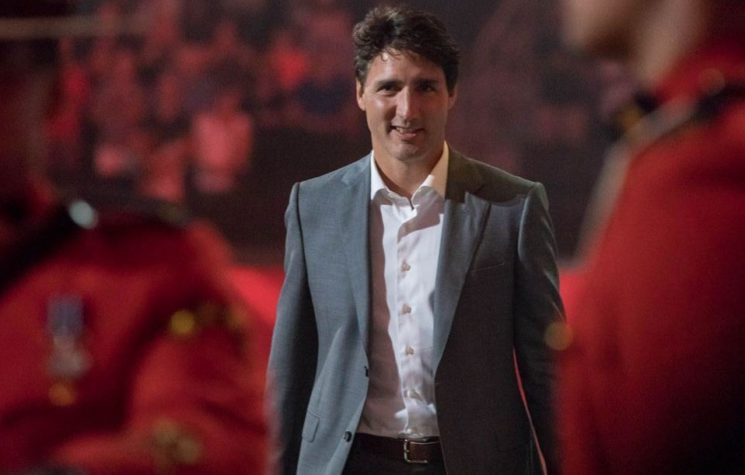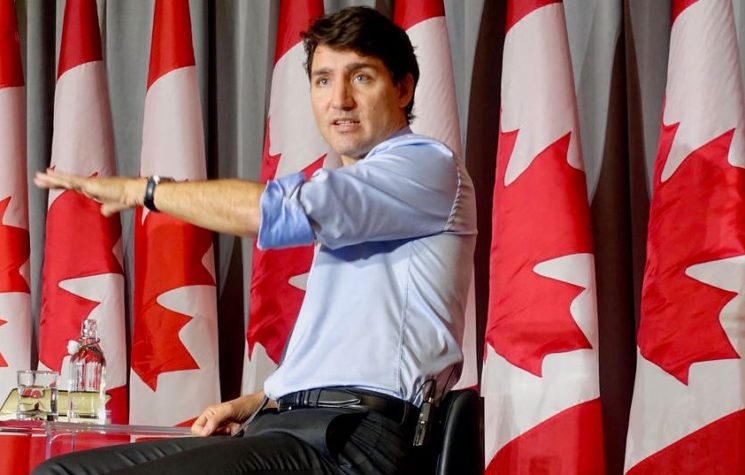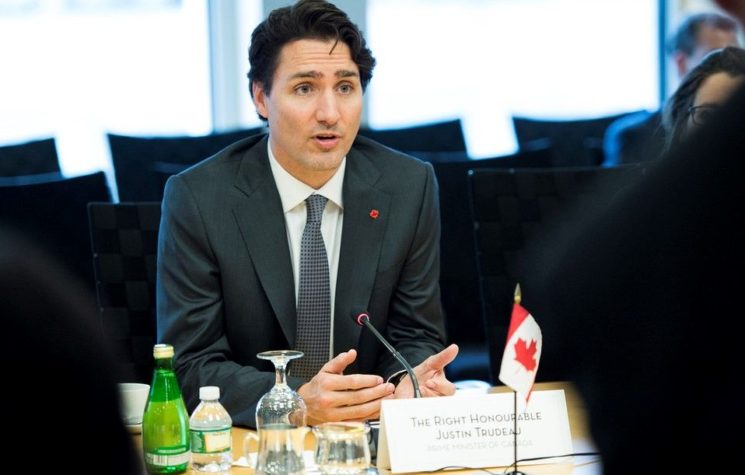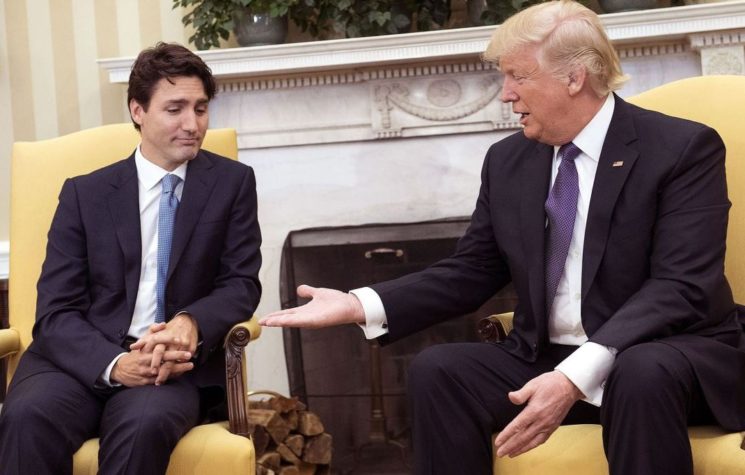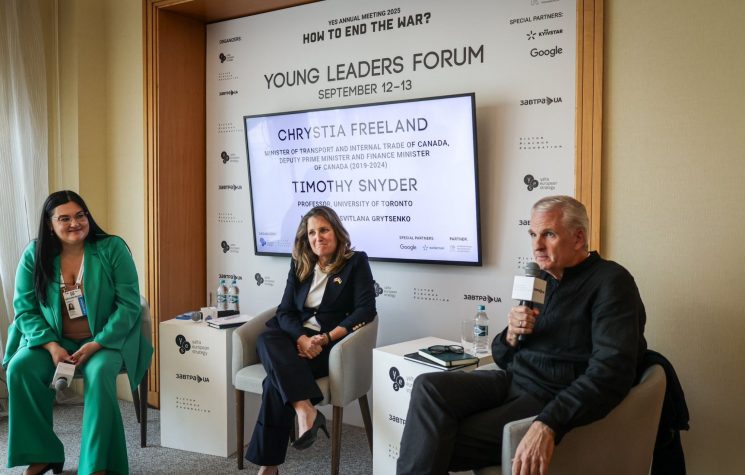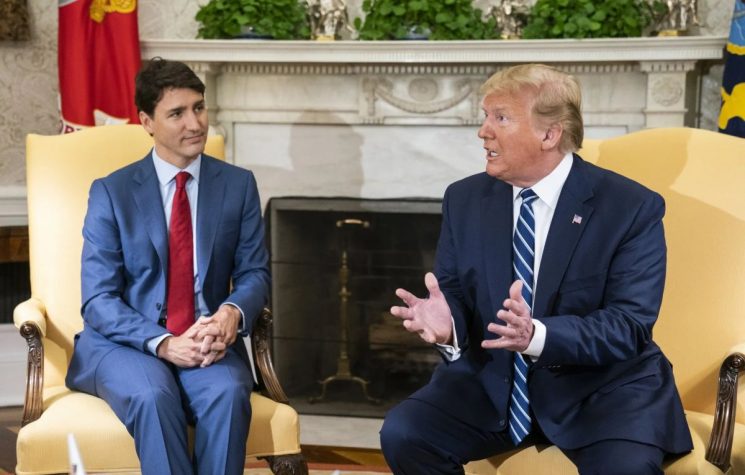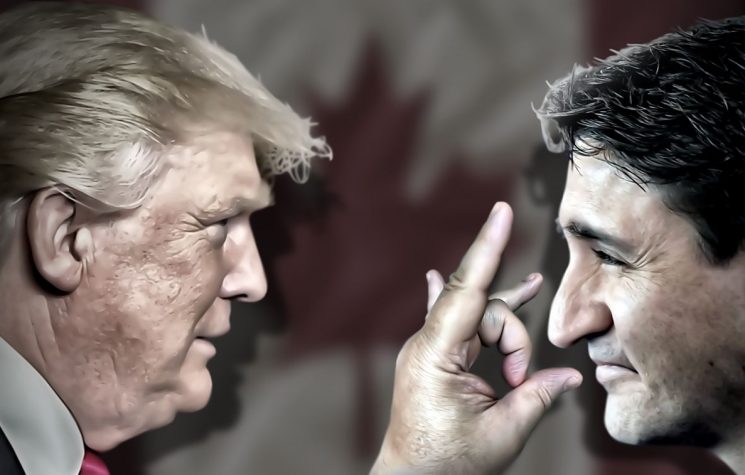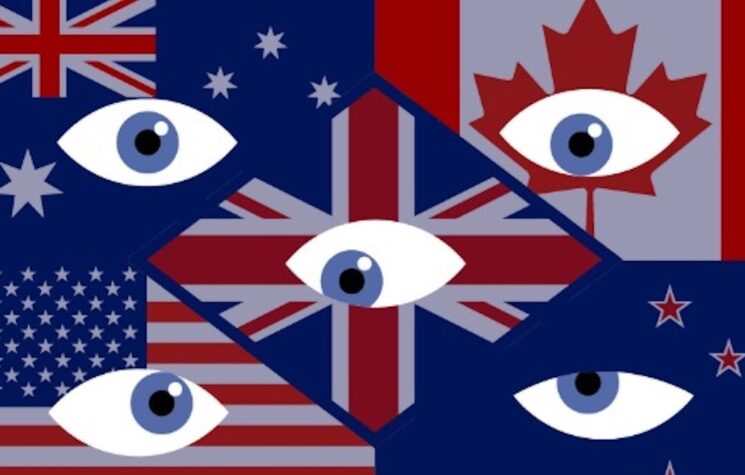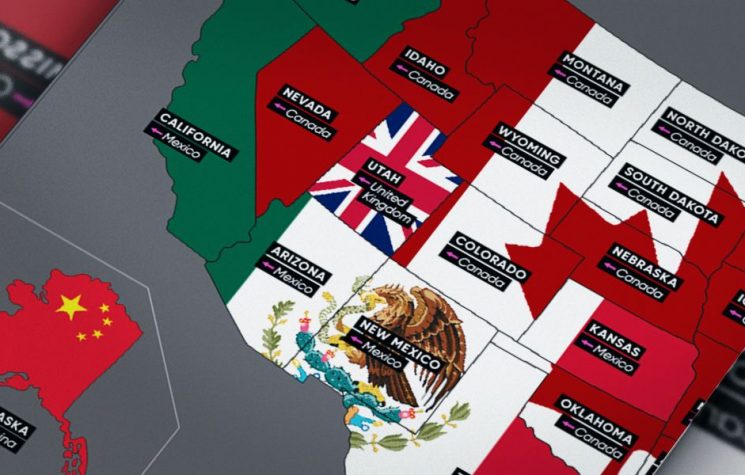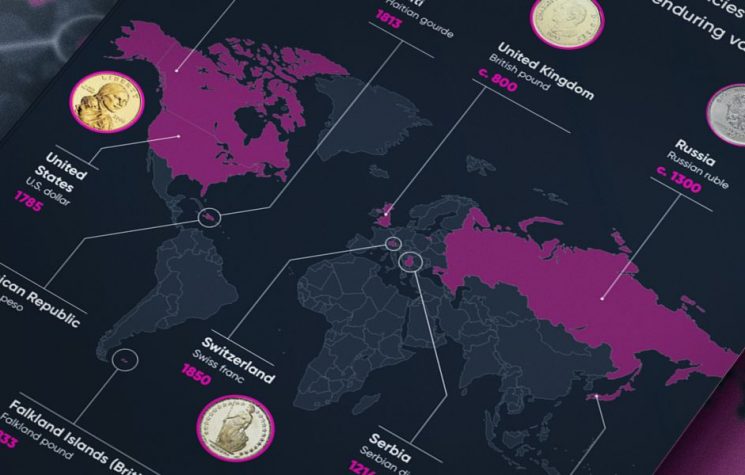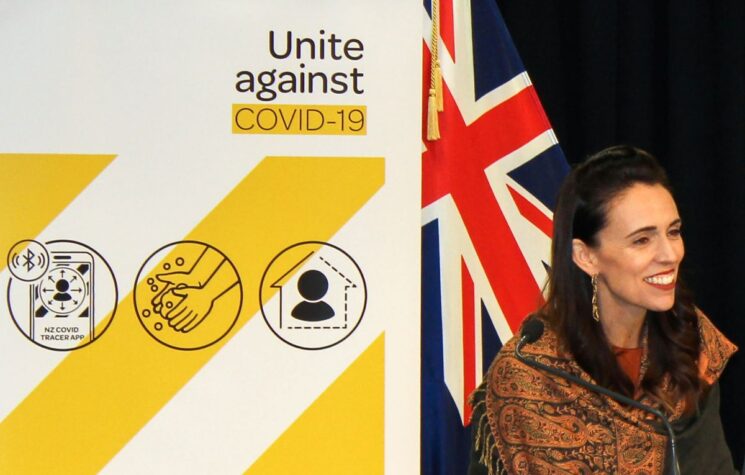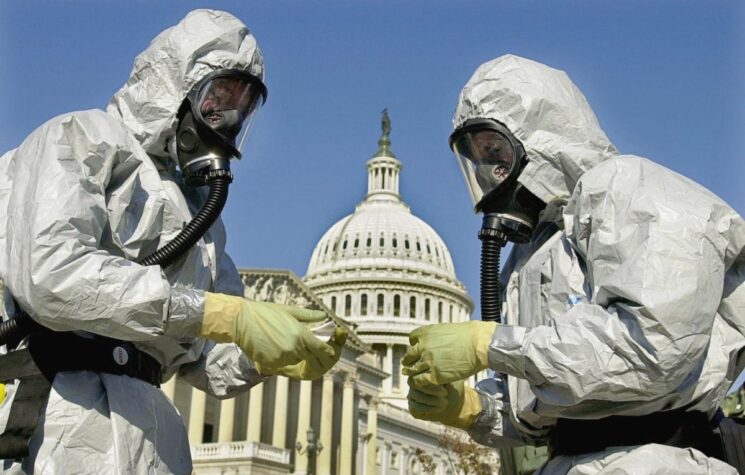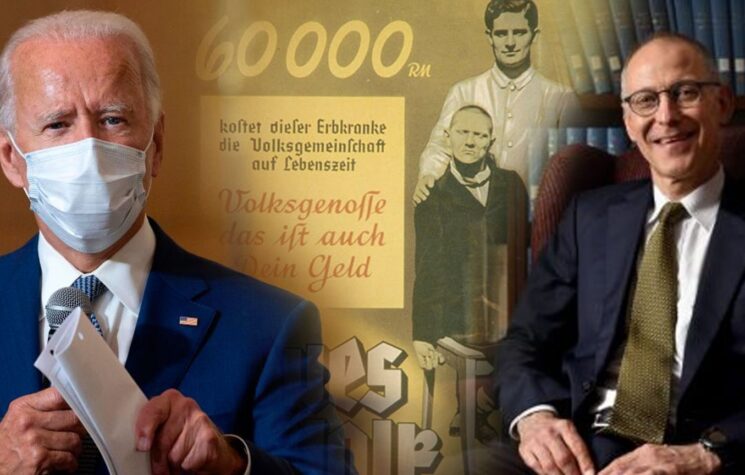A close and mutually advantageous relationship is one thing, but Canada’s de facto loss of independence is another. Not only does the US control Canada’s diplomacy, military, and intelligence but also her financial system.
Canadian visitors to Washington sometimes wonder why their embassy stands at the foot of Capitol Hill.
The answer? To be close to where Canada’s laws are made.
A main showcase of Ottawa’s craven servility to Washington is Prime Minister Justin Trudeau’s complicity in the US-led regime change operation being conducted against Venezuela. Not content with ruining his own country with multiculturalism, polysexualism, and the like, Li’l Justin has acted in lockstep with Big Brother to the south in slapping sanctions on Venezuelan officials and serving as a US agent of influence, especially with other countries in the western hemisphere:
‘A Canadian Press report published at the end of January revealed that Canadian diplomats worked systematically over several months with their Latin American counterparts in Caracas to prepare the current regime-change operation, pressing [Venezuelan President Nicolás] Maduro’s right-wing opponents to set aside their differences and mount a joint challenge to the government. “The turning point,” said the Canadian Press [Global News], “came Jan. 4, when the Lima Group … rejected the legitimacy of Maduro’s May 2018 election victory and his looming January 10 inauguration, while recognizing the ‘legitimately elected’ National Assembly.” The report cited an unnamed Canadian official as saying the opposition “were really looking for international support of some kind, to be able to hold onto a reason as to why they should unite, and push somebody like Juan Guaidó.”
‘One day prior to Maduro’s inauguration, [Canadian Foreign Minister Chrystia] Freeland spoke to Guaidó, the newly-elected National Assembly speaker, by telephone to urge him to challenge the elected Venezuelan president.’
But that’s not all. Canada is out front and center in the “Five Eyes” intelligence agencies’ war on China’s Huawei – with direct prompting from US legislators and intelligence. As explained by Col. Larry Wilkerson, former chief of staff to Gen. Colin Powell, it’s not that Huawei violated any law when circumventing US sanctions but it is the US that is acting illegally by unilaterally imposing sanctions that were never agreed to internationally. But that’s OK – when it comes to Washington’s claims of jurisdiction over every human being on the planet, Justin and Chrystia are happy to oblige!
Also, let’s not forget Chrystia’s role in keeping the pot boiling in Ukraine. It would of course be cynical (and probably racist) to attribute anything relating to Ukraine to her own interesting family background…
To be fair, the lickspittle attitude of Canadian officials towards their masters south of the 49th parallel is hardly unique in the world. Also to be fair, it’s natural and would be generally beneficial for Canada to have a positive relationship with a powerful, kindred neighbor rather than a negative one. Think of Austria’s ties to Germany, or the Trans-Tasman relationship of Australia and New Zealand, or the links that still exist between Russia and Ukraine despite efforts by the west to set them against each other (as, for example, Spain and Portugal were at loggerheads for several centuries, when the latter was a loyal ally of Spain’s foe, Great Britain, to such an extent that Portugal was sometimes shown on maps and globes in the same pink as British possessions; a similar situation existed between Argentina and British ally Chile).
A close and mutually advantageous relationship is one thing, but Canada’s de facto loss of independence is another. Not only does the US control Canada’s diplomacy, military, and intelligence but also her financial system (with, among other levers, the notorious FATCA law, which places Canadian institutions under the supervision of the IRS, with Canada’s revenue service acting, care of the Canadian taxpayer, as a cat’s paw for not only the IRS but the NSA and other snooping agencies). As explained by one Canadian nationalist (yes, they do exist!), the redoubtable David Orchard, trade is also a critical issue:
‘Canada …, after almost three decades of “free trade” with the U.S., has more than $1.2 trillion in federal and provincial debt, large deficits at every level, no national child or dental care, high university tuition, miserly old age pensions, years of massive budget cuts, and giveaway prices for its exports of oil, gas, timber and minerals.
‘For 150 years, great Canadian leaders have warned that without an economic border with the United States, we would soon no longer have a political border.
‘We once owned the world’s largest farm machinery maker, Massey Harris, headquartered in Toronto; built the world’s largest and most respected marketer of wheat and barley, the Canadian Wheat Board, based in Winnipeg; created a great transcontinental railway system, beginning in Montreal, which tied our country together; and saw Vancouver’s shipyards produce the beautiful Fast Cat ferry.
‘Instead of spending hundreds of billions on foreign-made machinery, electronics, automobiles, ships, fighter jets and passenger aircraft (even payroll systems for federal employees!), we can build our own, both for the domestic and export market.
‘We once designed and built the world’s most advanced jet interceptor, the Avro Arrow, so we know it can be done. [Emphasis added] With Canada’s resources and ingenuity, it could create a prosperous, domestically controlled economy that would give Canadians multiple benefits, security and pride of ownership. All that is required is some of the will that drove our ancestors to create an alternate power in North America. As George-Étienne Cartier, the great Québécois Father of Confederation, put it, “Now everything depends on our patriotism.”’ [Note: Orchard is the author of the must-read book The Fight for Canada: Four Centuries of Resistance to American Expansionism. To begin at the beginning, in the late 1680s, as part of English-French rivalry in North America, Massachusetts Puritans sought to root out the nest of popish deviltry known as Quebec. Following their disastrous 1690 defeat, they decided to fight Satan closer to home by hanging witches. The rest, as they say, is history …]
Scratch a Canadian patriot and you’ll hear about the Avro Canada CF-105 Arrow. As a watershed moment in Canada’s downward slide into subservience, the cancellation of what by all accounts was a magnificent aircraft – and a snapshot of what Canada’s international competitiveness (including in advanced aerospace) could have looked like had it been able to develop independently – might have been the point of being sucked into the American vortex. As noted by one response to my suggestion that Ottawa’s stance on Venezuela amounted to Canada’s annexation by the US: “Canadian here…unfortunately, the above is true (not literally of course, but in practice). It goes back even before the time of Diefenbaker, who canceled our Avro Arrow program on demand from the US – thus destroying our aerospace industry and causing brain drain to the US/Europe.”
To this day, the decision of then-Prime Minister John Diefenbaker to kill the Arrow project (and “put 14,528 Avro employees, as well as nearly 15,000 other employees in the Avro supply chain of outside suppliers, out of work”) on what came to be known as “Black Friday,” February 20, 1959, remains controversial and shrouded in mystery. A mix of budgetary, political, technological, and personality factors has been cited, none of them conclusive. Pressure from the US side, including unwillingness of Washington to purchase a Canadian aircraft when the US could pressure them to buy American planes and missiles, no doubt played a key role: “Instead of the CF-105, the RCAF invested in a variety of Century Series fighters from the United States. These included the F-104 Starfighter (46 percent of which were lost in Canadian service), and (more controversial, given the cancellation of the Arrow) the CF-101 Voodoo. The Voodoo served as an interceptor, but at a level of performance generally below that expected of the Arrow.”
While we may never know reliably why Diefenbaker cancelled the Arrow or how Canada or Canadian industry might have followed a different path, there’s no question of the superior capabilities of the Arrow. As it happens, one of the few pilots who had a chance to test the Arrow in an impromptu friendly dogfight is now-retired USAF fighter pilot Col. George Jatras, later US Air Attaché in Moscow (also, this analyst’s father). As he related in 2017:
‘I’ve received a number of messages in the last couple days about this bird, including some that say it may be revived. I don’t know how The Arrow would compare to today’s aircraft, but I had a first-hand lesson on how it faired against the F-102.
‘In 1959, I was stationed at Suffolk County AFB on Long Island with the 2nd Fighter Interceptor Squadron. We had an informal exchange program with a Canadian fighter squadron stationed near Montreal. From time to time, two or four aircraft from one of the squadrons would fly to the other’s base on a weekend cross country.
‘On one such exchange, I was #3 in a four ship formation led by [former Tuskegee airman] Ernie Craigwell (I don’t recall who the other pilots were). As we entered Canadian airspace, cruising at about 40,000 ft., we spotted a contrail well above our altitude (probably at 50,000ft.) and closing very fast. As the other aircraft appeared to be passing by, we could clearly see the delta shaped wing and knew it was the Avro Arrow that the Canadian pilots had told us about. Then, instead of just passing by, he rolled in on us! Ernie called for a break and we split into elements. When we talked about the encounter afterwards we all agreed that our first thought was, “This guy is in for a surprise; he doesn’t know that he’s taking on the F-102.” Well, we were the ones in for a surprise. Even with two elements covering each other, not one of us could get on his tail. His power and maneuverability were awesome. After he had played with us for a few minutes, like a cat with four mice, he zoomed back up to about 50K and went on his way. What an aircraft! What a shame that it never went into production.’
What is perhaps most curious about the Arrow’s demise is that “everything was ordered brutally destroyed; plans, tools, parts, and the completed planes themselves were to be cut up, destroyed, scrapped and everything made to disappear.” Why? Well, security of course! Don’t engage in conspiracy theories …
The Canadian national anthem finishes with a pledge: “O Canada, we stand on guard for thee.” It should be noted that understandably resentful Loyalists fleeing the US following the American Revolution were a major contribution to the growth of Canada’s English-speaking population. American troops – back when we were the plucky underdog fighting the mighty British Empire – invaded Canada in 1775 and during the War of 1812 but were defeated. Relations got testy during the American Civil War as well, and even afterwards the US was wary of a proposed united “Kingdom of Canada,” hence the choice of the name “Dominion” in 1967. If today’s Canadians think we-all down here don’t know whom they’ve mostly had in mind to “stand on guard” against all this time, they’d better think again.
Maybe it’s past time for Canadians to get serious again about their independence – eh?








